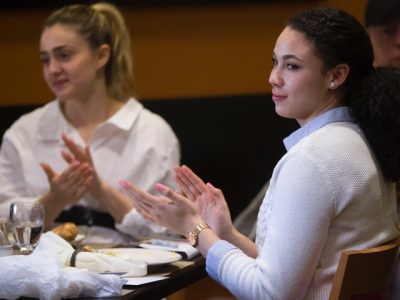By Adam Landry
During March, Carleton is celebrating National Engineering Month by showcasing outstanding alumni from its engineering and design programs, highlighting innovative projects produced by students, and exploring groundbreaking research conducted by faculty.
From high-tech wearables to social media giants and premium electric vehicles, Carleton graduates are emerging as leaders in a booming tech industry. Here’s a look at three of them.
Chad Harber, Lead Industrial Designer, Fitbit
While an exciting career was always in the cards for Carleton graduate Chad Harber (BID/07), the road that would inevitably lead him there was anything but set in stone. Perhaps fittingly, his path to landing the role of Lead Industrial Designer at Fitbit materialized as organically as one of his sketches.
“I originally thought I wanted to become a mechanical engineer,” Chad explains.
“I always excelled in the creative fields and building things with my hands, but I eventually realized that the thing I enjoyed most was envisioning what things could be.”
Having shifted his sights from engineering, Chad chose to remain in his hometown of Ottawa to pursue Industrial Design at Carleton. Proving himself to be an enthusiastic and ambitious student, he engaged with the co-op program to secure a position with Mitel, followed by Carleton’s first-ever student internship with Burton Snowboards. After designing a special helmet fit system for the latter, Chad set his post-graduation sights on moving to Vermont to work with the company full-time.
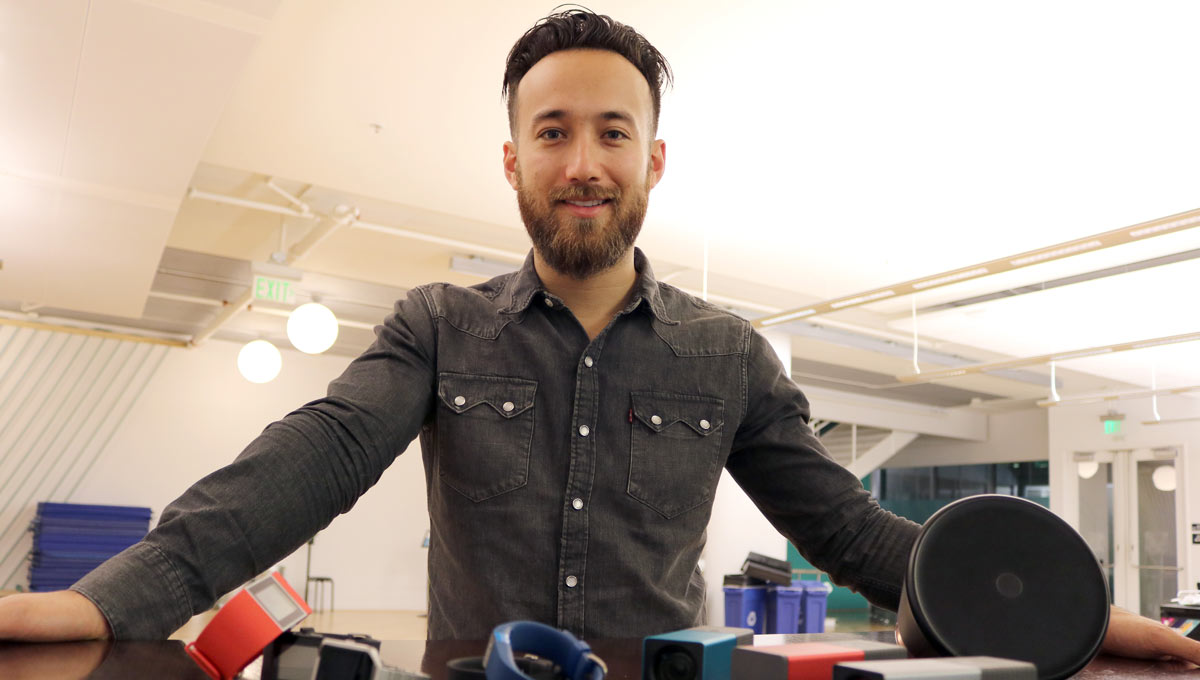
Carleton graduate Chad Harber (BID/07), the Lead Industrial Designer at Fitbit.
With his mind set on the American Northeast and his career trajectory all but determined, Chad’s plans would take an unexpected detour after a discussion with one of his fourth-year professors, Bjarki Hallgrimsson. Recognizing Chad’s potential in design, Prof. Hallgrimsson recommended that he instead head to California to pursue his career.
After giving the matter some thought, Chad heeded his instructor’s advice and redirected his destination to San Francisco. After moving to the City by the Bay, Chad joined NewDealDesign as a junior designer. Five years on, having progressed to a design manager position, he accepted an offer from an up-and-coming startup known as Aether Things, where he would design an intelligent learning speaker.
Later recognizing that the startup would be unable to sustain its momentum, Chad moved on to join Fitbit in July 2015. Now the company’s Lead Industrial Designer, he has no regrets about his decision to stake his claim in the Golden State.
“It’s amazing to think how that conversation at Carleton would end up defining so much of my career,” he says. “I still pinch myself today when I’m at work in a place like this, sketching out and conceptualizing something that I’m passionate about and that others can benefit from.”
Along with a team of designers, Chad is frequently tasked with visualizing new ideas for Fitbit. In order to solve problems from a design point of view, he collects feedback from principle designers, executives, engineers, marketers and consumers. While gathering input is essential to the design process, Chad notes that bringing everything together can often be the design team’s greatest challenge.
“We’re responsible for creating a vision, but also for executing that vision to ensure it can be developed into a tangible and functional mass market product,” he explains.
“It’s different than designing for a client because a company this large has so many layers that each product, as an idea, has to be sold internally many times over before it gets the green light.”
Chad also highlights the importance of keeping everything in perspective in an industry where the majority of concepts don’t end up seeing the light of day.
“It’s easy to get excited about a design that you’ve done yourself because you’ve put so much into it that you’re obviously going to love it,” he notes. “If you can translate that excitement and passion to everyone around you, you’ve hit the mark because that’s likely how the public will react as well.”
Fortunately, many of Chad’s early designs did make it off the drawing board, ultimately helping him to secure his position with the tech giant. While he feels he was fortunate to have so many products reach the market, Chad notes that his experience at Carleton was an essential component of his success.
“Compared to other schools, the Industrial Design program at Carleton was more of a blend of technical and creative learning,” he explains. “I feel that helped me to produce designs that were more practical and realistic. I was able to find that balance between conceptualization and real-world application early on and apply it throughout my career.”
Chad also emphasizes the importance of taking risks as you learn, noting that it can help young designers discover and cultivate their talents and interests.
“At Carleton I had a tremendous amount of freedom and support, which allowed me to really go out and push boundaries in a manner which is not always feasible in a corporate setting,” he says. “Having an opportunity like that can help determine what kind of a designer you truly are by helping you embrace the intricacies of your personality that led you to design in the first place.”
While he admits that his career path could have pulled him in any number of directions, Chad notes that he was drawn to Fitbit in part because of its mission statement to help people to live happier, healthier and more active lives.
“When you look out at the world, you see so many people who are trying to live better,” he says. “Fitbit has the potential to transform how we think about being active and healthy and if I can be a part of something that impacts someone’s quality of life, for me, there is no better calling.”
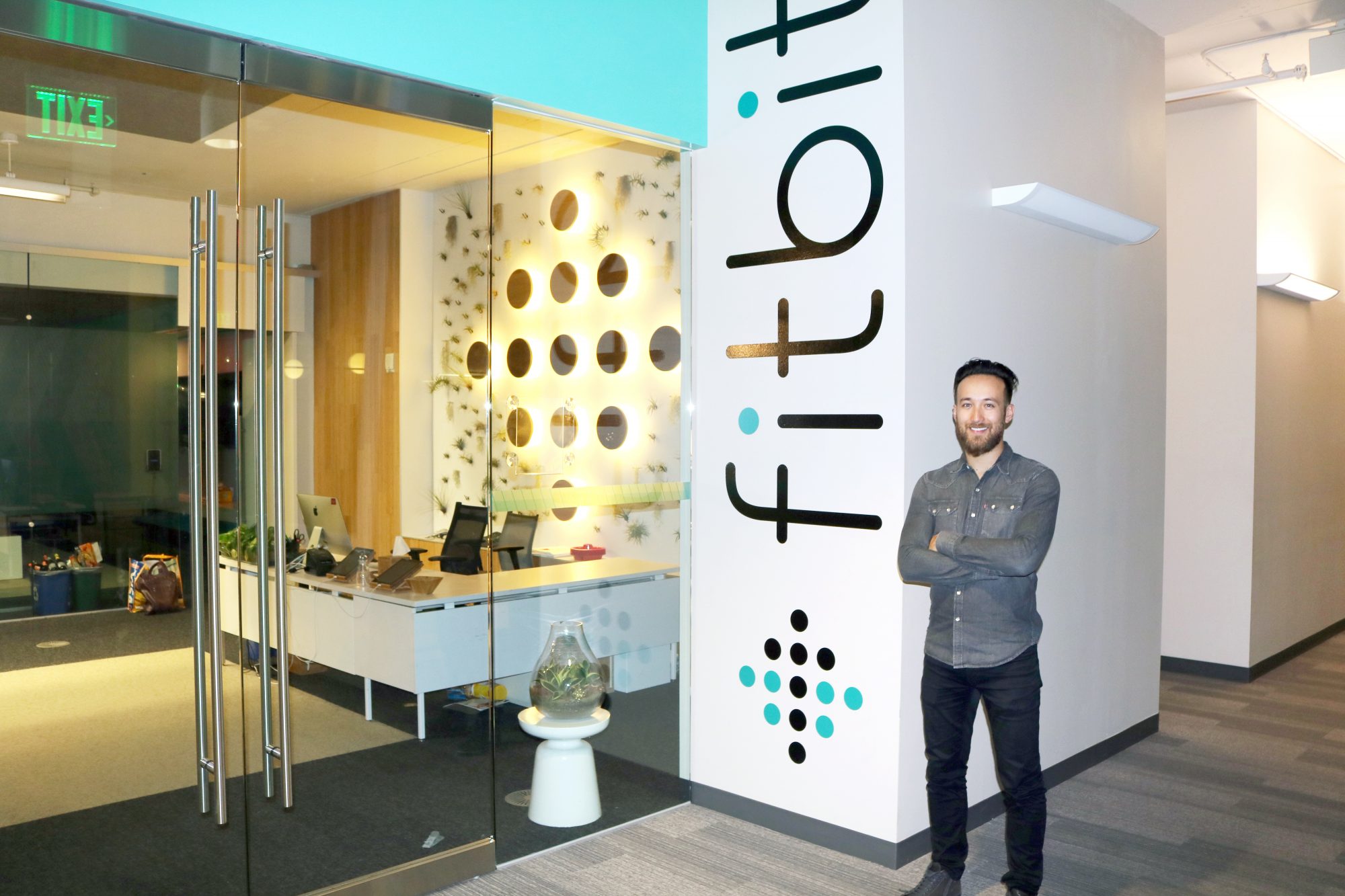
Shane Booth, Product Design Manager, Instagram
“It’s all about collaboration,” says Carleton Industrial Design graduate Shane Booth (BID/02) as he walks along the outdoor promenade that stretches across Facebook’s picturesque California headquarters. “It’s truly remarkable what you can achieve when you’re surrounded by people that inspire you every day.”
Such a mentality is clearly visible throughout Facebook’s Menlo Park campus. Its open-air environment resembles a small town more than a corporate hub and its overtly customized, open concept indoor offices convey a relaxed and socially engaging atmosphere that is uncharacteristic in the business world.
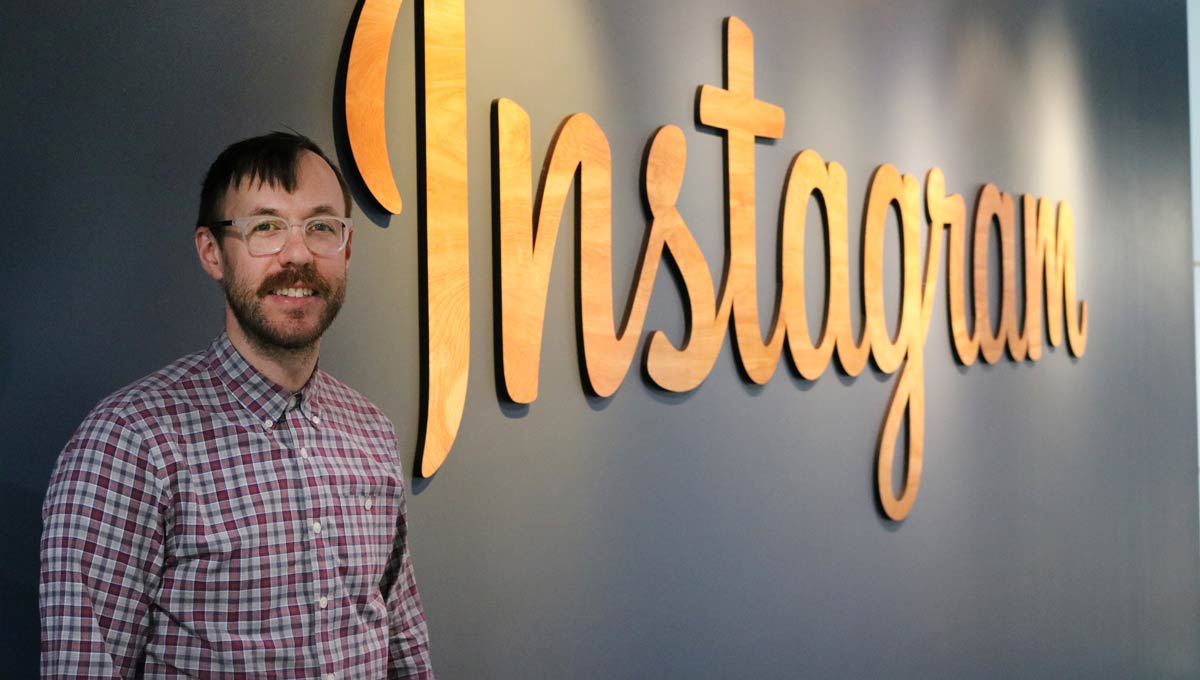
Carleton Industrial Design graduate Shane Booth (BID/02) leads a team that focusses on designing experiences that help businesses share their unique points of view on Instagram.
At first glance, you could be forgiven for mistaking Facebook employees to be socializing more than working, but a closer look reveals a professional aura hiding in plain sight. Listening more intently, it becomes apparent that staff are discussing strategy while sitting together or enjoying a meal in an outdoor courtyard, while others are holding walking meetings as they leisurely stroll down path lanes dedicated to just such a purpose.
It’s no coincidence that Facebook has found a way for its employees to remain productive regardless of their whereabouts or activity. It’s a level of innovation you’d expect from one of the largest tech giants on the planet – and it’s that type of thinking that attracted Shane to be part of the experience.
“After I became established in California, I was interested in exploring a number of opportunities,” he says.
“When I saw how much emphasis Facebook placed on supporting and enabling its employees, I knew this is where I wanted to be.”
At Facebook since 2015, Shane leads a team that focusses on designing experiences that help businesses share their unique points of view on Instagram, the popular photo and video sharing network acquired by Facebook in 2012.
“Businesses have been a part of the Instagram community since the beginning,” he explains. “The trick is designing experiences that businesses love which will also benefit the community as a whole”.
When it comes to understanding user experience, Shane discovered early on that listening to your audience is fundamental to any discipline. While at Carleton, his capstone fourth-year project, focused on bicycle paramedic identification, evolved from that responsibility to understand user needs.
“Rather than simply designing something that people want, it’s important to consider how design should be driven by necessity,” he says. “Capstone really demonstrated how research is needed to help frame a project’s direction and ultimately determine its goals.”
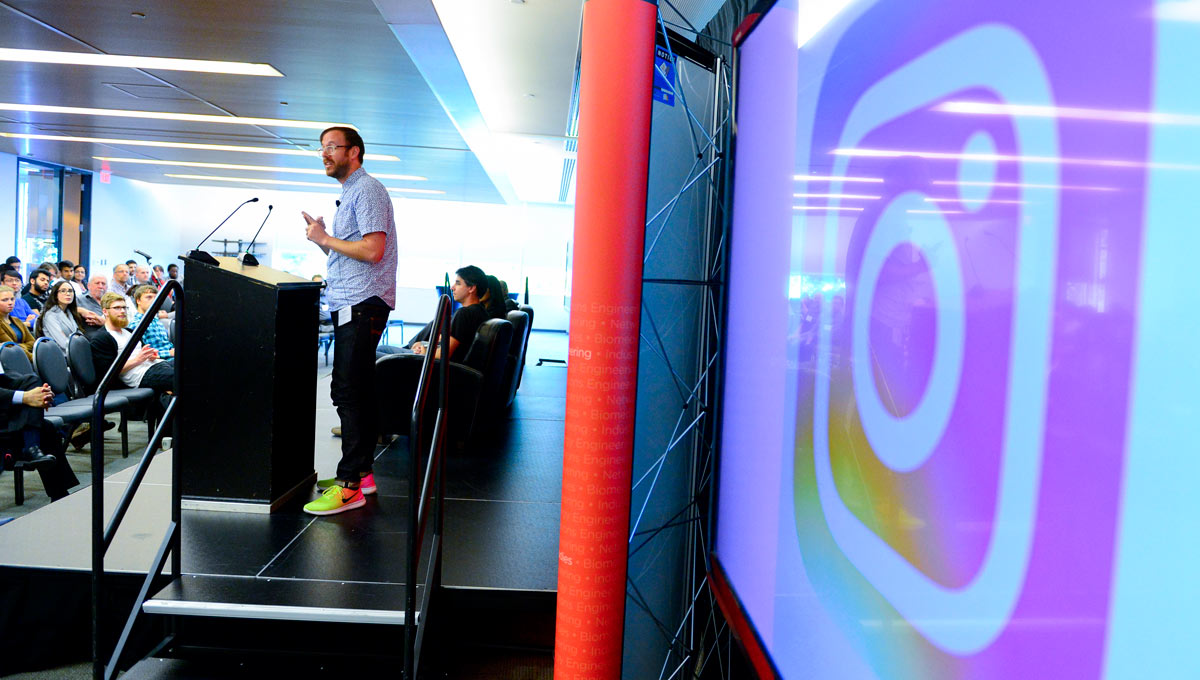
During his final year at Carleton, Shane also produced an innovative design that would ignite his career. Entering a technology competition put on by Samsung Electronics, he submitted a drinking glass which glowed when detecting increases in heart rate, providing a visual translation of how our bodies react to changes in mood. Shortly after being awarded third place for his design, Shane learned that Mitsubishi Electric was developing a similar concept.
“I decided to call up the executive who was running that project to tell him about my design,” he explains.
“He invited me to be an intern at Mitsubishi and two weeks after I graduated I moved to Boston to do just that.”
What was initially supposed to be a three-month internship would instead continue for three years. Following his extended stay at Mitsubishi, Shane began working with Mage Design in Los Angeles, creating sunglasses, watches and snow goggles for Spy Optic.
He later followed his wife to San Francisco, where he joined NewDealDesign before becoming an independent contractor. He eventually made the transition to interaction design, finding success at companies such as Tapjoy and LiveRail before ultimately joining Instagram.
“Even though my degree was in Industrial Design, it allowed me to build a portfolio and develop the expertise that opened the door to digital ventures,” he says. “When the time came, I found myself equipped to transfer that skill set over.”
Shane highly credits his studies at Carleton for teaching him how to solve problems creatively.
“The ID program offered a transition from theory to practice, which really took me out of the comfort zone of academia,” he explains. “You need that experience if you want to succeed. That’s a big reason why there are all these amazing graduates from Carleton in amazing places and I will always be proud of that.”
Having garnered an insider’s perspective at Facebook and Instagram, Shane now looks to emphasize the positive impact social networks can have on a global scale.
“The phones in our pockets have become a tool that can be greatly empowering,” he says. “It’s all about bringing people together and I think that sense of community is expanded when you look at some of Facebook’s goals in developing countries. I want to help make the world more open and connected and Facebook is leading in this mission.”
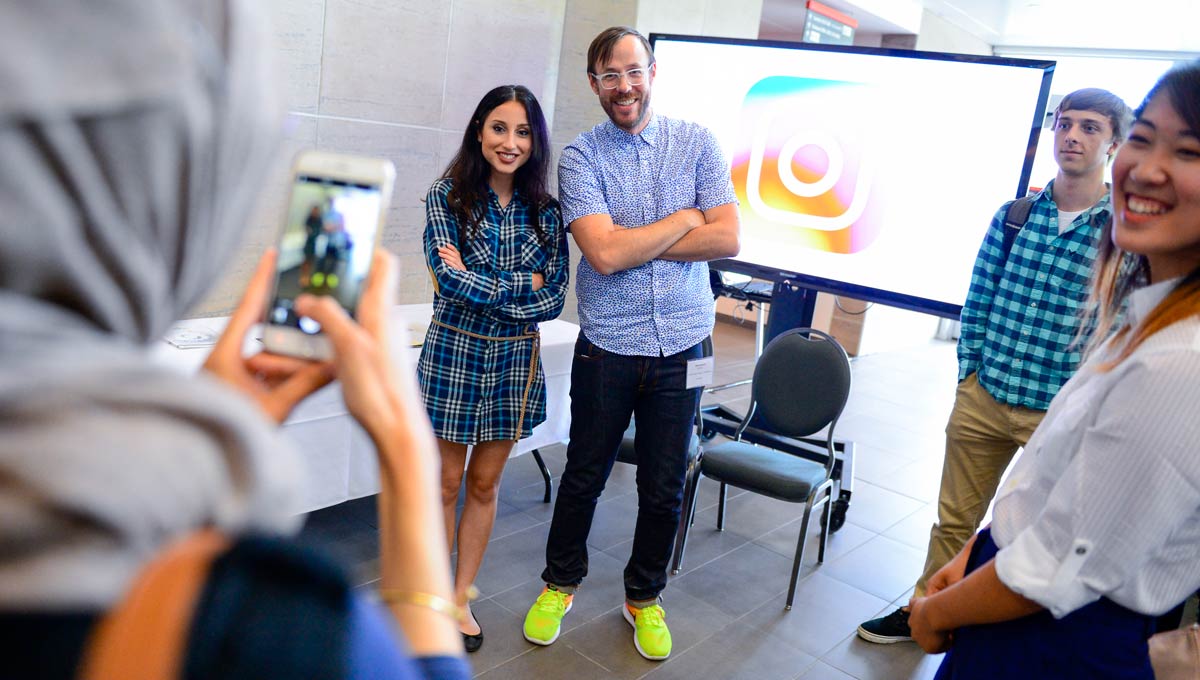
Quinn Murphy, Aerodynamicist,
Tesla Motors
“Right now it seems the ceiling for electric vehicles is endless,” says Aerospace Engineering alumnus Quinn Murphy (BEng /10). “They’re only getting better and they’re only getting more efficient.”
As an aerodynamicist at Tesla Motors, the Carleton graduate is working to shift an industry toward sustainable transportation. While he accepts that change doesn’t occur overnight, Quinn hopes that including aerodynamicists at the earliest stages of design will help to accelerate the transformation.
“You’re truly embracing what’s best for a vehicle when you involve aerodynamicists at the point of conception,” he says. “Rather than being handed a schematic and having to work backwards to improve a design and make it functional, we can ensure that everything serves a purpose from the outset.”
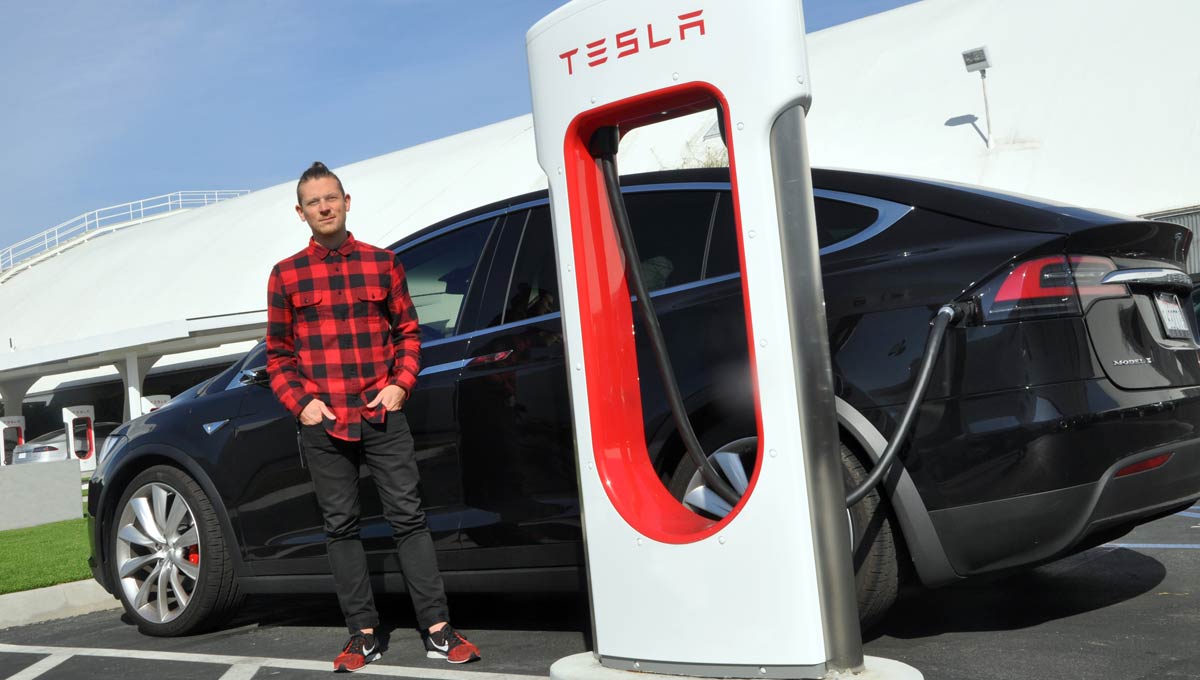
Aerospace Engineering alumnus Quinn Murphy (BEng /10) is an aerodynamicist at Tesla Motors.
As part of a specialized team at Tesla, the California based automaker which established the premium electric vehicle market, Quinn focuses on shaping vehicle exteriors to eliminate inefficiencies. From specially designed mirrors and spoilers to devices incorporated within a vehicle’s undercarriage to direct airflow, every decision is by design.
“Even slight design adjustments can significantly affect the range of an electric vehicle,” he says.
“Whenever we can reduce or eliminate drag, it boosts vehicle efficiency.”
While incorporating aerodynamics into design is standard practice throughout the auto industry, Quinn notes that airflow is emphasized even more when it comes to electric vehicles, giving his team a little more say at the design table.
“Companies that have traditionally focused on internal combustion vehicles tend to be more willing to sacrifice some degree of aerodynamic performance in order to accommodate an aesthetic need,” he explains. “We want to show the industry that making choices just because they look good is outdated. There’s no reason why we can’t design vehicles that are as efficient as they are eye-catching.”
Quinn began his studies at Carleton in Civil Engineering, but after two years discovered his true passion was Aerospace. Despite adding an extra year to his studies, Quinn feels that changing gears in his third year was the right decision.
“As soon as I began that new path. I knew it was exactly what I wanted to do,” he says. “It was a challenging but ultimately rewarding experience.”
He also speaks highly of his engineering professors, noting how their methods and insight proved invaluable in establishing his professional career.
“The level of engagement from the Aerospace faculty at Carleton has been unparalleled in my experiences,” he says. “They were so knowledgeable and there was so much emphasis on how first principles and fundamentals can be used to solve anything, which really spoke to me.”
While at Carleton, Quinn also worked on the conceptual design of a new multi-mission uninhabited aerial vehicle (UAV) as part of his capstone fourth-year project. While it would be a number of years before the inaugural flight of the UAV, known as Corvus, Quinn recounts the pride he felt in seeing the craft finally take to the skies.
“It was pretty exciting to see something that I had drafted up and did the initial calculations for actually fly,” he says. “It’s exhilarating to see your ideas transform into reality.”
Quinn notes that his desire to directly impact production also played a vital role in attracting him to Tesla.
“I wanted to be part of something where I could actually see my work out in the real world,” he explains. “That’s why the automotive sector really caught my attention, because the turnaround cycle in usually around three years or less.”
While Quinn says that his next vehicle will be a Tesla model, he believes the rapid growth of electric vehicles throughout the industry will significantly benefit us all.
“We’re seeing more companies starting to produce electric vehicles in all classes, which is great for the industry,” he explains. “By getting more electric vehicles on the road, not only will we worry less about fluctuations at the pump – we’ll see cleaner cities, a dramatic drop in carbon emissions, and we will have adopted sustainable practices for the future.”
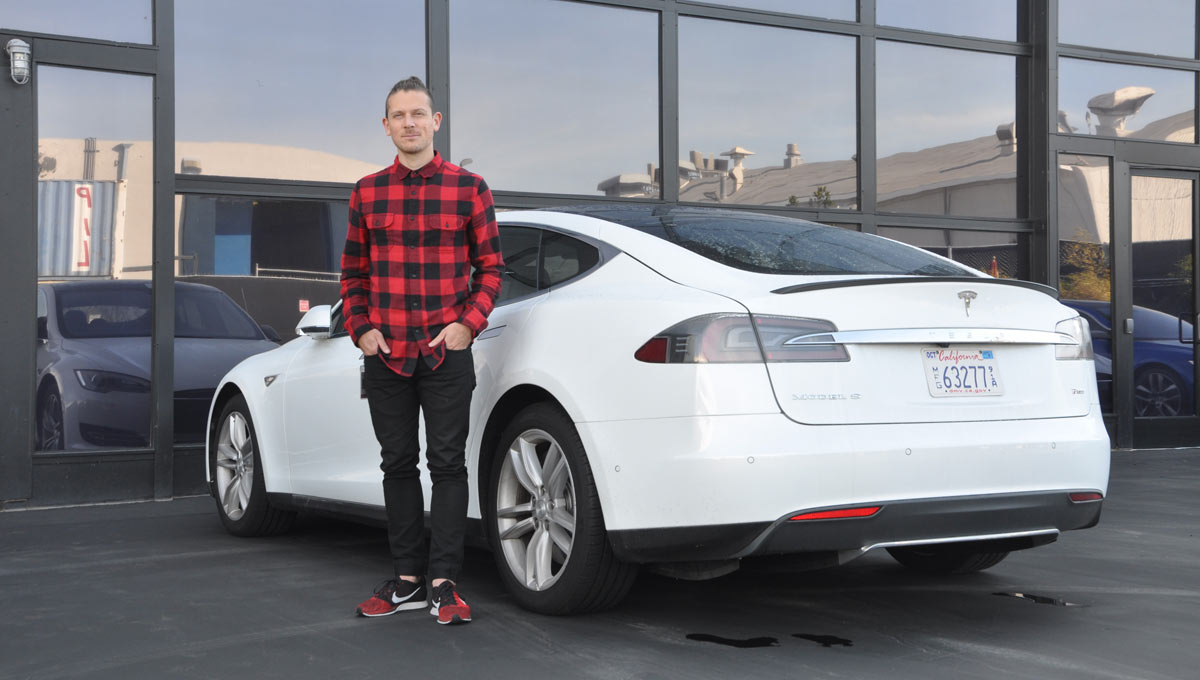
Thursday, March 16, 2017 in Engineering, Graduate Students, Technology
Share: Twitter, Facebook

